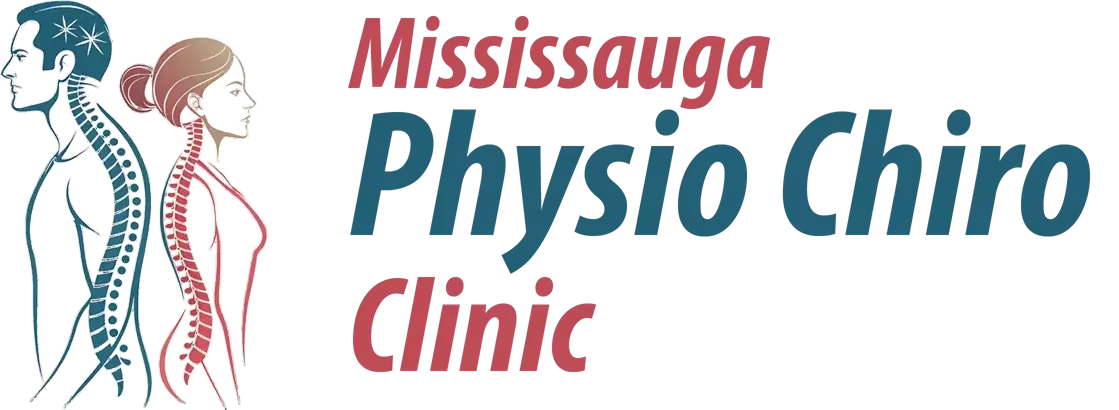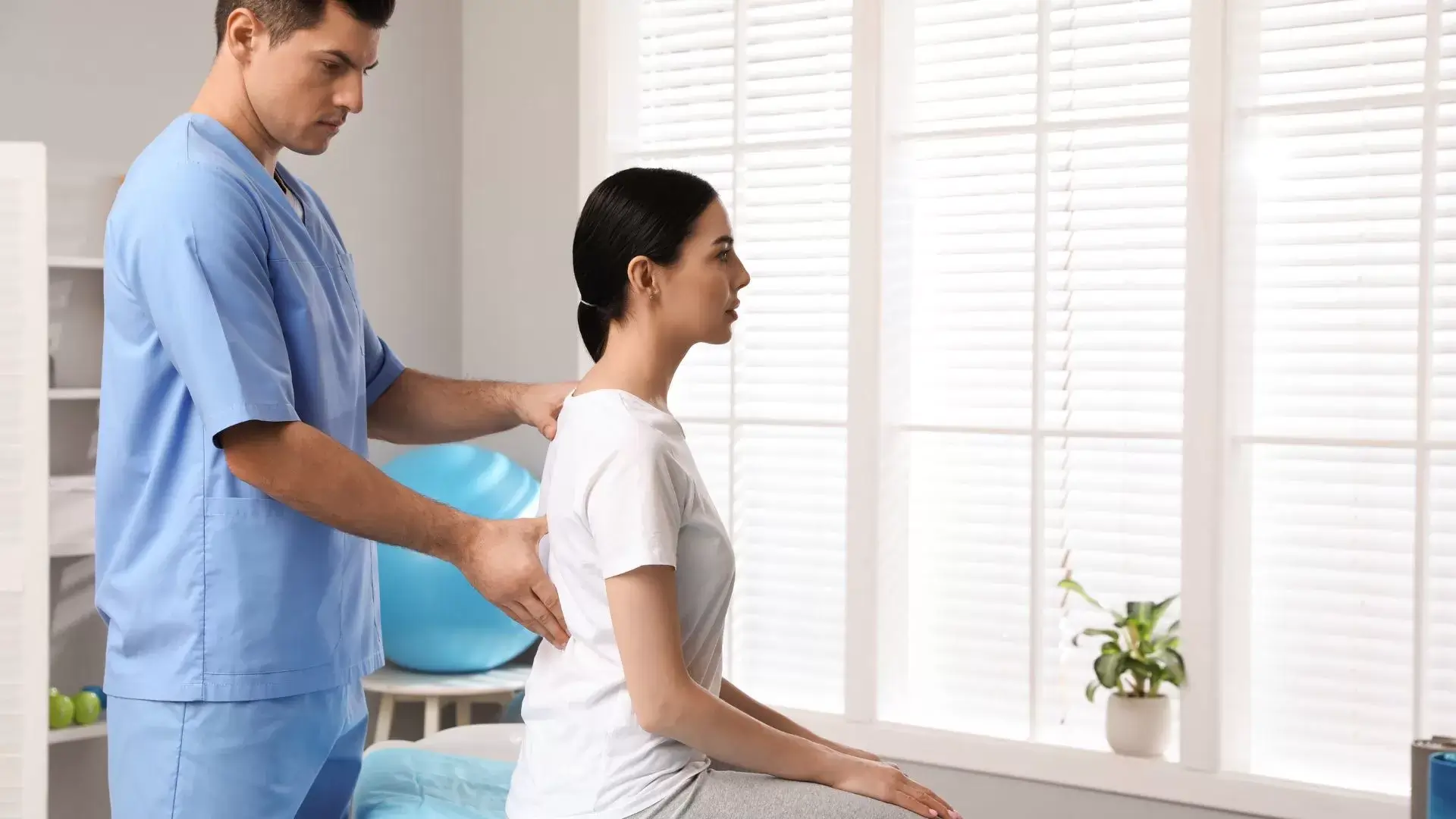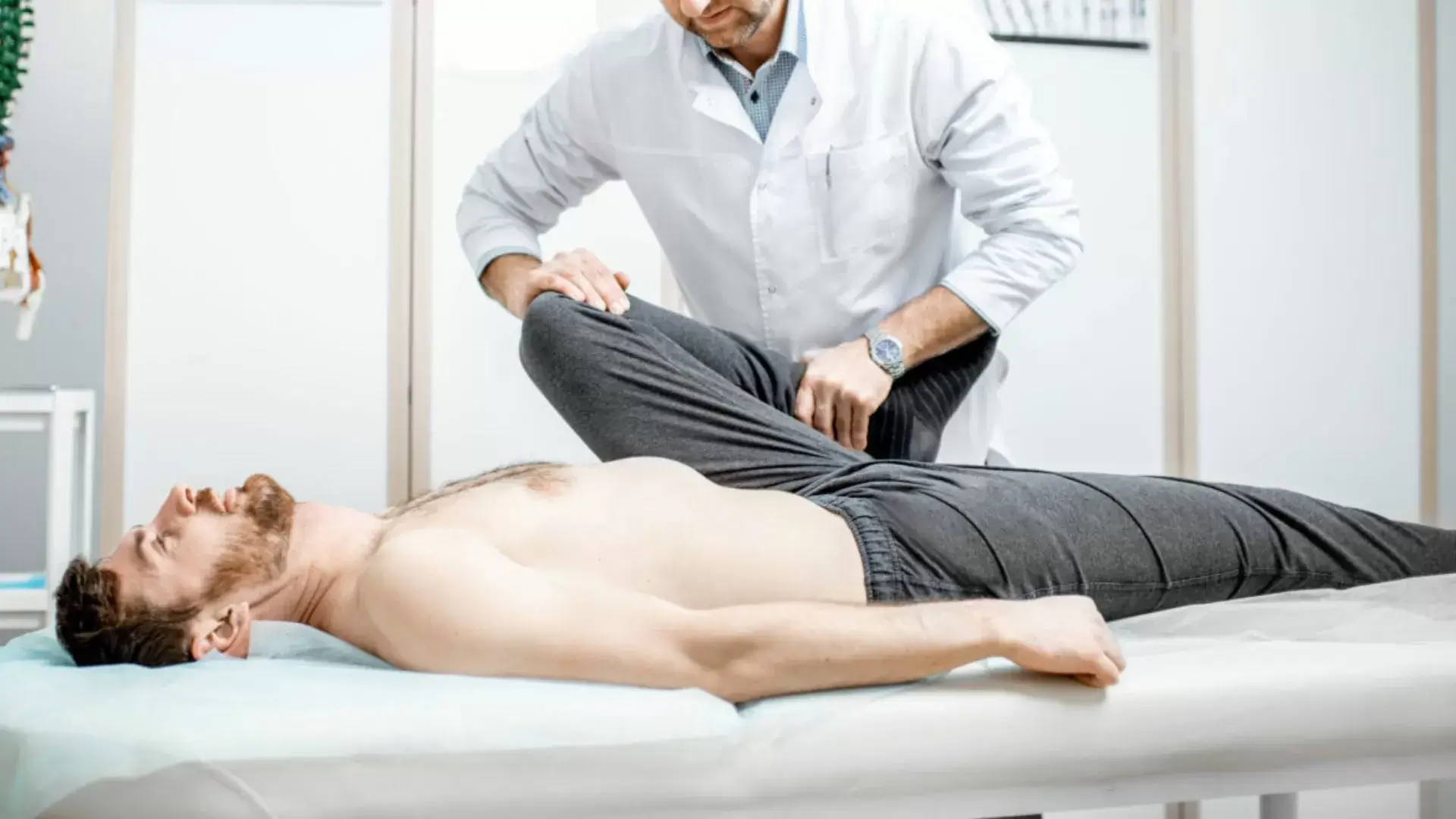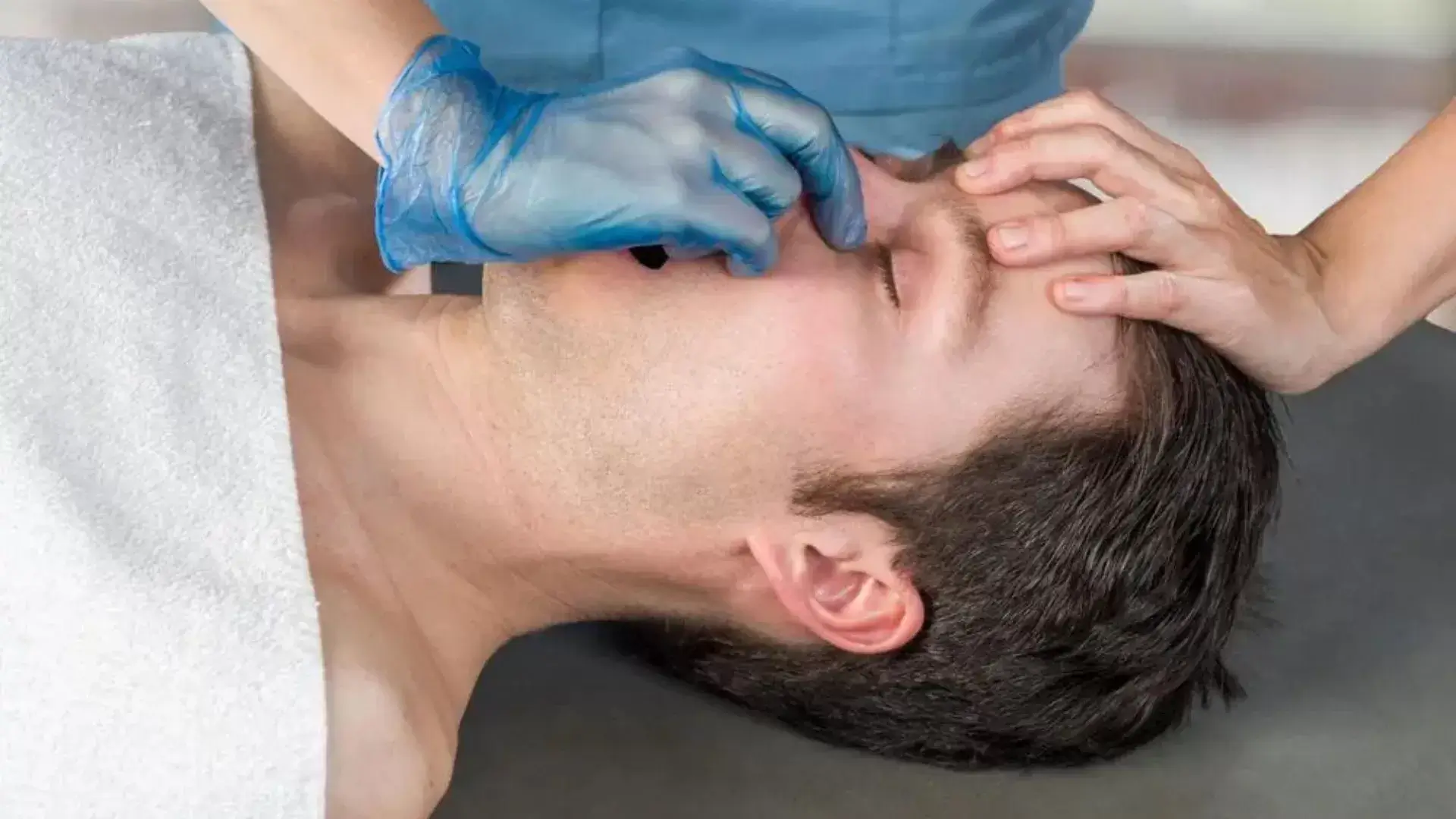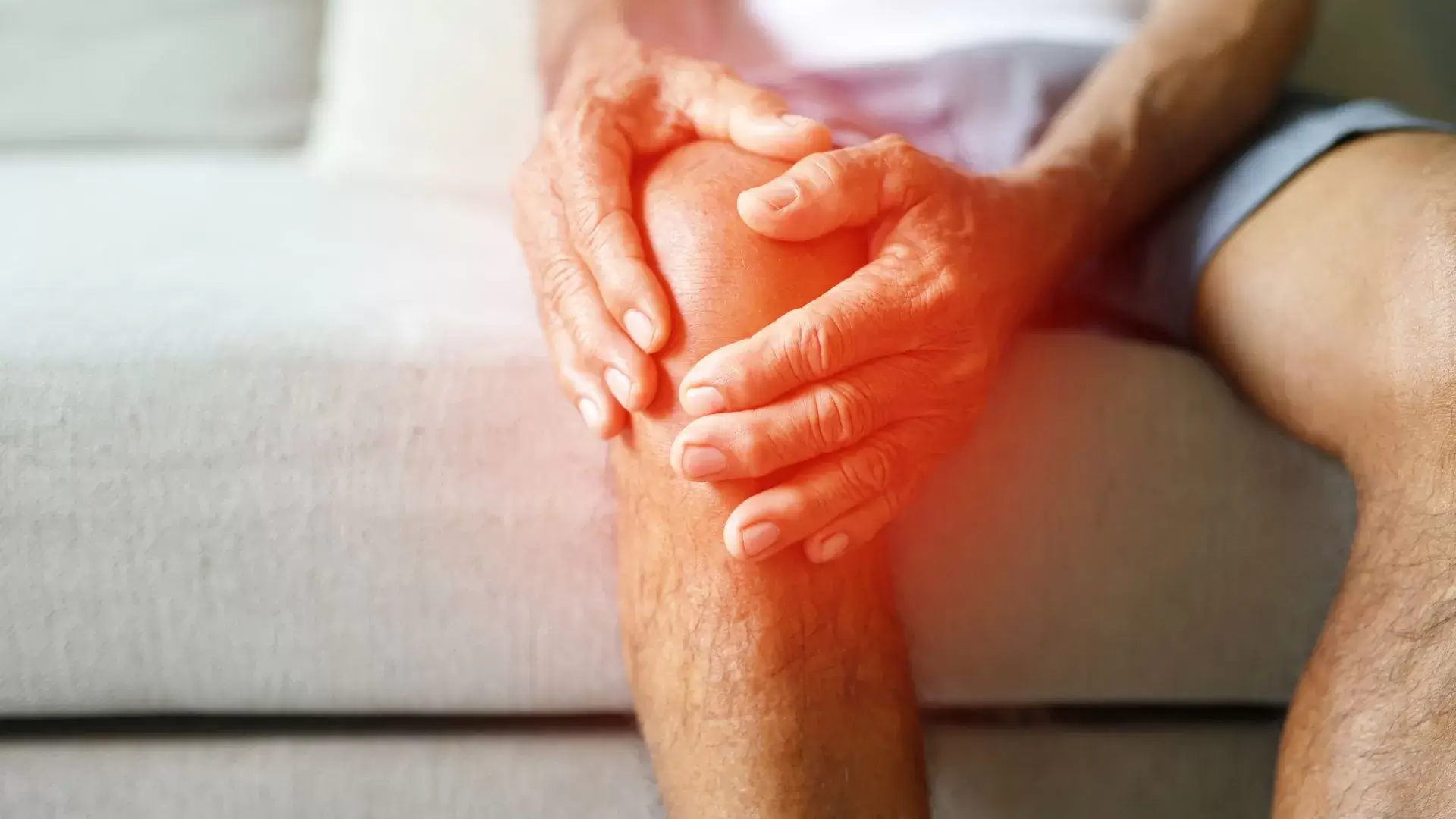Chiropractor for Tailbone Pain in Mississauga In Mississauga, we recognize that tailbone pain, or coccydynia, can greatly impact daily life. Many of us may not realize that seeing a Chiropractor for Tailbone Pain offers effective treatments tailored to address both the discomfort and its underlying causes. By utilizing a combination of spinal alignment, manual therapy, and targeted exercises, these professionals aim to provide relief and empower us with the knowledge to manage our health. However, what exactly should we consider when seeking chiropractic care for this specific issue? Let’s explore the essential factors that could guide us toward effective treatment options. About Our Physiotherapy and Chiropractic Services At Mississauga Physio Chiro Clinic, we offer a thorough range of physiotherapy and chiropractic services tailored to effectively address and alleviate tailbone pain. We recognize how debilitating tailbone discomfort can be, whether it arises from a tailbone injury, prolonged sitting, or poor posture. Our team is dedicated to providing compassionate care and evidence-based treatments designed specifically for tailbone pain relief. Through chiropractic care for tailbone pain, we focus on spinal alignment and posture correction to reduce pressure on the coccyx. Our physiotherapy and chiropractic services in Mississauga also include extensive tailbone pain treatment plans that may involve manual therapy, targeted tailbone pain exercises, and personalized rehabilitation strategies to promote healing and strength. We emphasize the importance of addressing not just the symptoms but also the underlying causes of tailbone pain. Our goal is to empower you with the knowledge and tools needed for recovery, ensuring you feel supported every step of the way. With our expertise in tailbone rehabilitation, we can help you regain mobility and improve your quality of life. We’re here to guide you on your journey toward lasting tailbone pain relief. Understanding Chiropractic Care for Tailbone Injuries Chiropractic care plays an essential role in understanding and treating tailbone injuries, helping us address both the pain and its root causes effectively. Many of us experience coccyx pain, often referred to as coccydynia, which can lead to significant tailbone tenderness and inflammation. By utilizing targeted chiropractic techniques, we can alleviate discomfort associated with tailbone injuries and improve overall mobility. Our approach often includes a detailed assessment of the sacrococcygeal area, allowing us to identify specific issues contributing to tailbone pain from injury. We might also recommend a tailbone support cushion to provide relief while sitting, making daily activities more manageable. Additionally, we promote integrating physical therapy for tailbone pain as part of a thorough treatment plan, which can enhance recovery and strengthen surrounding muscles. In some cases, we may suggest more advanced interventions, such as a tailbone nerve block, when conservative methods don’t yield satisfactory results. By combining these strategies, we aim to not only relieve pain but also empower our patients to regain their quality of life. Through understanding and addressing the complexities of tailbone injuries, we can foster healing and resilience. Primary Causes of Tailbone Pain and Injuries Identifying the primary causes of tailbone pain and injuries is essential for developing effective treatment strategies, as various factors can contribute to discomfort in this sensitive area. One common issue is coccygeal pain, often resulting from a tailbone injury or trauma. This can manifest as a bruised tailbone or, in more severe cases, a tailbone fracture, leading to tailbone swelling and discomfort. Prolonged sitting can exacerbate tailbone pain, especially for those who spend long hours in a seated position. We must also consider conditions like sacrococcygeal joint dysfunction, which can contribute to chronic tailbone pain and pelvic pain, making daily activities challenging. Injuries sustained during falls or accidents can lead to significant tailbone trauma, requiring careful evaluation and treatment. Additionally, repetitive strain from certain activities can further aggravate the area. By recognizing these primary causes, we can better address the underlying issues related to tailbone pain. Understanding these factors helps guide our approach in providing relief and restoring function for those suffering from discomfort in the coccygeal region. Identifying Symptoms of Tailbone Damage Recognizing the symptoms of tailbone damage is essential for determining the appropriate course of treatment and alleviating discomfort experienced by those affected. Common signs of a coccyx injury include sharp or aching pain in the lower back, particularly when sitting or rising from a seated position. We may notice increased tailbone soreness or sensitivity, which can feel particularly pronounced during prolonged periods of sitting or when pressure is applied to the area. In cases of a fractured or broken tailbone, we might experience intense pain that can radiate to the sacral region, often referred to as sacral pain. Tailbone pain from pregnancy can also arise, with hormonal changes leading to increased sensitivity and discomfort. Additionally, tailbone muscle strain can contribute to ongoing pain, making it important to identify and address these underlying issues. If we experience persistent pain when sitting, or if tailbone pressure exacerbates our discomfort, it’s essential to seek professional help. By recognizing these symptoms early, we can take the necessary steps toward appropriate treatment and regain comfort in our daily activities. Chiropractic Evaluation and Imaging for Tailbone Injuries When we suspect a tailbone injury, a detailed evaluation by a chiropractor is essential for accurately diagnosing the issue and developing an effective treatment plan. During our chiropractic evaluation, we assess for signs of coccyx dysfunction, sacral misalignment, and any related lower back pain. Understanding the specific cause of your tailbone pain helps us tailor our approach. To gain a thorough understanding of your condition, we may recommend imaging studies, if necessary. This can help identify any structural issues that contribute to tailbone pain, especially for those experiencing discomfort from cycling or prolonged sitting. Once we’ve established the diagnosis, we often incorporate targeted tailbone pain stretches and tailbone mobility exercises into your treatment plan. These exercises can enhance flexibility and alleviate discomfort. Additionally, we may discuss ergonomic seating for tailbone pain to improve your daily comfort. In some cases, if conservative treatments aren’t effective, we might consider options like tailbone injection therapy to provide relief. Our goal
Physiotherapy for Joint Pain
Physiotherapy for Joint Pain in Mississauga Physiotherapy for Joint Pain is essential when considering the impact of joint pain on daily life. It’s clear that effective physiotherapy in Mississauga can play a pivotal role in recovery and management. By employing personalized treatment plans tailored to individual needs, we can address common issues like arthritis and tendonitis through a combination of manual therapy and targeted exercises. Understanding the underlying causes and symptoms of joint discomfort is essential, and we’re here to guide you through this process. What innovative strategies can we explore together to enhance your joint health and overall quality of life? About Our Physiotherapy and Chiropractic Services At Mississauga Physio Chiro Clinic, we specialize in providing extensive physiotherapy and chiropractic services designed to alleviate joint pain and enhance overall mobility. Our approach focuses on understanding each patient’s unique needs, particularly concerning joint dysfunction and inflammation. We offer tailored physical therapy for joint pain that aims to improve joint health and promote effective joint mobility. Our skilled therapist in Mississauga are dedicated to creating personalized treatment plans that incorporate joint strengthening exercises and ergonomic support for joints. We understand that maintaining a healthy weight is essential for joint health, so we also provide guidance on weight management strategies that can further support your journey to recovery. Understanding Physiotherapy for Joint Pain Relief Understanding how physiotherapy can effectively relieve joint pain is vital for anyone seeking to enhance their mobility and overall quality of life. In our experience, physiotherapy plays an essential role in managing conditions like arthritis and osteoarthritis, which often lead to joint stiffness, swelling, and tenderness. We focus on personalized treatment plans that incorporate various techniques to alleviate joint pain and improve joint support. These methods may include exercises aimed at enhancing joint flexibility and strength, tailored specifically to each individual’s needs. Furthermore, we often utilize heat therapy for joints, which can greatly reduce pain and increase circulation, thereby promoting healing. Through consistent physiotherapy sessions, we can help our patients regain their range of motion and reduce the discomfort associated with chronic joint conditions. Our approach fosters a supportive environment where patients are empowered to take an active role in their recovery. By addressing the underlying causes of joint pain, we aim to improve both function and quality of life, enabling everyone to enjoy their daily activities without the limitations imposed by joint discomfort. Together, we can work towards a pain-free future. Key Causes of Joint Pain and Dysfunction Joint pain and dysfunction can stem from a variety of underlying factors, and recognizing these causes is essential for effective treatment and management. One common cause is rheumatoid arthritis, an autoimmune disorder that leads to inflammation and joint discomfort. Similarly, psoriatic arthritis can affect the joints and skin, contributing to chronic joint pain. Osteoarthritis, or degenerative joint disease, is another prevalent condition characterized by joint degeneration over time, often resulting in stiffness and reduced mobility. Inflammatory arthritis, including conditions like gout, can also cause significant pain and discomfort, impacting daily activities. We must also consider lifestyle factors, as obesity can exacerbate joint issues due to increased pressure on weight-bearing joints. For those experiencing joint stiffness, seeking joint stiffness relief is vital, and physiotherapy can play a pivotal role. In some cases, mobility aids for joint support, such as braces or assistive devices, can enhance mobility and quality of life. By understanding these key causes, we empower ourselves to pursue effective strategies for managing joint pain and improving overall well-being. Identifying the Symptoms of Joint Pain Recognizing the symptoms of joint pain is essential for determining the right approach to treatment and management, especially after identifying potential underlying causes. We often encounter patients experiencing achy joints, which can sometimes indicate conditions like gout or autoimmune arthritis. These symptoms can manifest as swollen joints, making daily activities increasingly challenging. Acute joint pain is another common concern. It can appear suddenly and may be linked to issues such as reactive arthritis, often characterized by knee pain, hip pain, or even back pain. Understanding the nature of this pain helps us identify its source, whether it’s due to injury or inflammation. Joint instability is also a critical symptom to note. When we feel our joints giving way or lacking support, it might indicate a more serious underlying issue. Recognizing these symptoms early allows us to tailor a physiotherapy plan that focuses on strengthening the affected areas and alleviating discomfort. Clinical Assessments and Imaging for Joint Pain Diagnosis Accurate diagnosis of joint pain often relies on a combination of clinical evaluations and imaging techniques to uncover the underlying causes and determine the most effective treatment plan. During our initial consultation, we conduct thorough clinical evaluations, which may include evaluating joint alignment, examining range of motion, and identifying any signs of joint deterioration or cartilage damage. Imaging techniques, such as X-rays and MRIs, provide us with detailed views of the joint structures, enabling us to spot issues like cartilage damage or inadequate joint lubrication. This information is essential for a precise joint pain diagnosis and helps tailor our treatment strategies. Incorporating an anti-inflammatory diet for joints can greatly complement our findings, promoting healing and reducing inflammation. We may also recommend chiropractic care for joint pain, which focuses on restoring proper alignment and function. Additionally, bracing for joint stability can be beneficial, offering support during the recovery process. Through this all-encompassing approach, we guarantee that our patients receive the best possible care for their joint pain, paving the way for improved mobility and overall quality of life. Hands-On Therapy Techniques to Alleviate Joint Pain Building on our detailed approach to diagnosing joint pain, hands-on therapy techniques play an essential role in alleviating discomfort and enhancing mobility. In our physiotherapy practice, we utilize various methods like manual therapy and cold therapy for joints, which can greatly reduce inflammation and relieve pain. We often recommend acupuncture for joint pain, as it’s shown to improve circulation and promote healing. Additionally, we explore options like joint injections for targeted
Chiropractor for Epilepsy
Chiropractor for Epilepsy in Mississauga As we explore the role of chiropractors in managing epilepsy in Mississauga, we recognize the importance of a holistic approach to health. Chiropractors focus on spinal alignment and nervous system function, which can be crucial in alleviating symptoms and supporting overall well-being. Their tailored treatment plans often incorporate adjustments, lifestyle changes, and dietary suggestions, all aimed at enhancing seizure management. This integrative method not only complements traditional treatments but also fosters a supportive community. So, how exactly can chiropractic care make a difference in the lives of those living with epilepsy? About Our Physiotherapy and Chiropractic Services At Mississauga Physio Chiro Clinic, we offer an extensive range of physiotherapy and chiropractic services designed to support individuals with epilepsy and enhance their overall well-being. Our dedicated team understands the unique challenges faced by those managing epilepsy symptoms and is committed to providing tailored epilepsy treatment plans that focus on both seizure management and prevention. Our Best Physiotherapy and Chiropractic Services in Mississauga aim to improve mobility, reduce pain, and promote neurological rehabilitation. We believe that incorporating alternative treatments for epilepsy, such as manual therapy and targeted exercises, can play an essential role in enhancing quality of life for our patients. We work closely with individuals to develop personalized strategies for epilepsy management, helping them navigate their specific needs. Additionally, we endeavor to create a supportive environment that fosters a strong epilepsy community. By promoting education and awareness, we empower our patients to take charge of their health and well-being. Together, we explore effective approaches to living well with neurological disorders, ensuring that each patient feels understood and supported throughout their journey. Our goal is to help patients achieve their fullest potential while managing epilepsy effectively. Epilepsy Explained: Causes, Risk Factors, and Triggers Understanding epilepsy involves exploring its various causes, risk factors, and triggers, which can greatly impact how we tailor our treatment strategies for each individual. Epilepsy is a complex seizure disorder characterized by recurrent seizures, which can be classified into focal seizures and generalized seizures. The causes of epilepsy can vary widely, including genetic factors, brain injuries, or infections. Certain risk factors, such as family history or previous head trauma, can increase an individual’s likelihood of receiving an epilepsy diagnosis. Additionally, specific epilepsy triggers, like stress, lack of sleep, or even certain diets, can provoke seizures in susceptible individuals. Stress-induced seizures are particularly significant, as they highlight the importance of managing our lifestyle to reduce seizure frequency. We must also consider the potential complications of epilepsy, which can impact emotional well-being and quality of life. By understanding the relationship between epilepsy and diet, as well as lifestyle modifications, we can better support those affected. Ultimately, our goal is to create a holistic approach that addresses both the medical and personal aspects of living with epilepsy, helping individuals lead fulfilling lives. Identifying Different Seizure Types and Their Symptoms Different types of seizures can manifest in various ways, each with distinct symptoms that are fundamental for accurate identification and effective management. Understanding these differences is essential for anyone affected by epilepsy. Tonic-clonic seizures, often characterized by muscle rigidity and rhythmic jerking, can be quite dramatic and alarming. In contrast, absence seizures may present as brief lapses in awareness, often mistaken for daydreaming. Myoclonic seizures involve sudden muscle jerks, while atonic seizures lead to a sudden loss of muscle tone, causing individuals to drop or fall. Partial seizures, also known as focal seizures, originate in a specific area of the brain and can manifest as unusual sensations or movements. Recognizing seizure warning signs, like changes in behavior or aura, is crucial for timely intervention during these epileptic episodes. Chiropractic Care as a Supportive Therapy for Epilepsy Chiropractic care can serve as a valuable complementary therapy for individuals living with epilepsy, potentially helping to alleviate some symptoms and improve overall well-being. By focusing on spinal alignment and nervous system function, we might help reduce the physical tension that can exacerbate epilepsy and stress. This approach can be particularly beneficial for those experiencing anxiety and depression alongside their epilepsy. While epilepsy medications, including anticonvulsants, play an essential role in managing seizures, chiropractic care can support these treatments by promoting relaxation and reducing stress levels. We recognize that epilepsy monitoring is vital, and incorporating chiropractic adjustments may enhance the effectiveness of traditional epilepsy therapy. Many of us are aware of the importance of an epilepsy-friendly diet, which can further contribute to overall health. By combining dietary changes with chiropractic care, we can create a holistic approach that addresses both the physical and emotional aspects of living with epilepsy. As we continue to seek epilepsy support, we should consider how chiropractic care can fit into our broader management plan, helping us lead more balanced, fulfilling lives. How the Nervous System Influences Epileptic Disorders The intricate relationship between the nervous system and epileptic disorders plays a crucial role in how seizures manifest and how we can approach their management. Understanding this connection is essential, especially since epilepsy can be influenced by various factors, including genetics and brain injury. In our exploration of epilepsy research, we find that different types of epilepsy—like temporal lobe epilepsy, frontal lobe epilepsy, and absence epilepsy—each have unique neurological underpinnings. For many of us, managing epilepsy in adults often involves a combination of seizure medications tailored to the individual’s specific symptoms and needs. However, we should also consider how lifestyle factors, such as sleep, can exacerbate seizures, highlighting the importance of a holistic approach to treatment. As we investigate deeper into epilepsy and sleep, we recognize that disturbances in sleep patterns can trigger seizures and further complicate this nervous system disorder. It’s our hope that ongoing research into epilepsy and genetics will provide new insights, allowing us to better understand the nervous system’s role in these conditions and improve treatment options for those affected. The Impact of Chiropractic Adjustments on Brain and Nerve Function Understanding how the nervous system influences epilepsy leads us to explore how chiropractic adjustments
Chiropractor for Spinal Misalignment
Chiropractor for Spinal Misalignment in Mississauga If you’re looking for a chiropractor for spinal misalignment in Mississauga, we’re here to help. We offer personalized chiropractic care, focusing on spinal adjustments to restore alignment and enhance overall wellness. Our Top Physiotherapy & Chiropractic Services in Mississauga address the root causes of discomfort, like poor posture and muscle imbalances, through tailored treatments and rehabilitation programs. We believe in empowering our patients with knowledge about maintaining a healthy spine. With the right support and techniques, we can guide you on your journey to better spinal health. Explore what we offer, and you’ll find valuable insights into enhancing your well-being. About Our Physiotherapy and Chiropractic Services At Mississauga Physio Chiro Clinic, we offer extensive physiotherapy and chiropractic services designed to address spinal misalignment and promote overall wellness. Our dedicated team utilizes chiropractic therapy to provide effective spinal dysfunction treatment tailored to each patient’s individual needs. Through precise chiropractic adjustments and spinal manipulation, we aim to restore proper spinal alignment, alleviating back pain and enhancing mobility. We understand that spinal misalignment can lead to a range of issues, from chronic pain to reduced quality of life. That’s why we focus on thorough spinal rehabilitation programs that not only address immediate symptoms but also promote long-term health. Our spinal alignment therapy includes postural correction techniques to help patients maintain a healthy posture in their daily lives. In addition to chiropractic services, our physiotherapy offerings complement our approach, ensuring a holistic treatment plan. By combining these modalities, we can optimize your recovery and support your journey toward overall wellness. We’re committed to empowering you with knowledge and tools to manage your health effectively. Together, we can work towards achieving pain relief and improving your quality of life through our specialized services. Understanding Spinal Misalignment: Causes and Contributing Factors Spinal misalignment can arise from a variety of causes and contributing factors that affect our overall health and well-being. One common cause is vertebral subluxation, which involves the misalignment of spinal joints, leading to spinal dysfunction and potential nerve impingement. Our daily habits, such as poor posture, often contribute to postural misalignment and spinal curvature issues, exacerbating spinal compression and distortion. In our increasingly sedentary lifestyles, we might experience spinal mobility issues that stem from prolonged sitting or improper ergonomics. These factors can strain our spinal structure, resulting in spinal joint dysfunction. Additionally, stress and repetitive movements can lead to muscle imbalances that further complicate our spinal health. It’s essential to recognize these contributing factors, as they can create a cycle of discomfort and dysfunction. By understanding the underlying causes of spinal misalignment, we can take proactive steps to address these issues. Regular chiropractic care can help realign our spine, enhance spinal mobility, and promote overall wellness. Together, let’s prioritize our spinal health, fostering a better quality of life and reducing the risk of future complications. Identifying the Signs and Symptoms of Spinal Misalignment Recognizing the signs and symptoms of misaligned vertebrae is essential for maintaining our overall health and well-being. Spinal misalignment symptoms can manifest in various ways, including chronic back pain and neck pain. We should be attentive to these discomforts, as they may indicate underlying spinal deviation or instability. Additionally, we may notice muscle imbalances, where one side of our body feels tighter or weaker than the other. This imbalance can lead to further spinal inflammation, exacerbating our discomfort. Scoliosis, characterized by an abnormal curvature of the spine, is another condition that may arise from misalignment and requires our attention. We must also consider how our daily activities and posture contribute to our spinal health. Prolonged sitting or improper lifting techniques can heighten the risk of developing spinal instability. If we notice these signs, it’s imperative to seek spinal therapy to address the root causes rather than merely treating the symptoms. By acknowledging these indicators and taking proactive steps, we can support our spinal health and enhance our overall quality of life. The Role of Chiropractic Care in Correcting Spinal Misalignment Chiropractic care plays an essential role in correcting spinal misalignment by utilizing targeted adjustments that realign the vertebrae and restore balance to the body. We recognize that conditions like kyphosis and lordosis can lead to vertebral misalignment, contributing to poor spinal posture and discomfort. Through thorough chiropractic spine care, we focus on spinal realignment, addressing issues that may cause nerve compression and pain. Our approach often involves spinal decompression techniques that relieve pressure on the spinal discs and nerves, promoting overall spinal health. By implementing tailored adjustment strategies, we enhance spinal stabilization, which not only alleviates existing discomfort but also prevents future issues. At our clinic, we emphasize the importance of proper spinal support, guiding patients toward healthier postural habits that can mitigate the effects of everyday wear and tear. We believe in fostering a supportive environment where we can educate our patients about the significance of maintaining a well-aligned spine. Together, we can work toward restoring ideal function and enhancing overall well-being through effective chiropractic care. Diagnosing Spinal Misalignment: Assessments and Imaging Techniques To effectively diagnose spinal misalignment, we utilize a combination of thorough assessments and advanced imaging techniques that help us pinpoint the exact areas of concern. Our primary goal is to evaluate spine alignment across all regions, including cervical, thoracic, and lumbar areas. During our assessments, we look for signs of spinal subluxation, which can lead to nerve irritation and affect overall spinal biomechanics. We often begin with a detailed patient history and physical examination, identifying any symptoms related to spinal nerve health. This allows us to understand how misalignments may be impacting spinal flexibility and mobility. When necessary, we incorporate imaging techniques such as X-rays or MRI scans to provide a clearer picture of the spine’s structure. These images assist us in detecting specific types of misalignment and potential underlying issues. By combining our assessments with imaging results, we can accurately diagnose conditions like cervical misalignment or thoracic misalignment, ensuring that we address the root cause of discomfort rather than
Chiropractor for Limb injuries
Chiropractor for Limb Injuries in Mississauga We recognize how challenging limb injuries can be, and our Chiropractor for Limb Injuries services in Mississauga are designed to help you recover effectively. Our Best Physiotherapy & Chiropractic Clinic in Mississauga in treating conditions like sprains, strains, and fractures through tailored rehabilitation programs. We focus on restoring strength, flexibility, and proper function using gentle adjustments and personalized therapy. By incorporating advanced diagnostic techniques and ongoing support, we address your specific needs for a complete recovery. If you’d like to discover more about our thorough approach to healing and how we can assist you in your recovery journey, we encourage you to explore further. About Our Physiotherapy and Chiropractic Services At Mississauga Physio Chiro Clinic, we specialize in providing extensive physiotherapy and chiropractic services aimed at effectively treating limb injuries and promoting overall wellness. Our team is dedicated to addressing various conditions, including sprains, strains, and fractures, which can lead to significant mobility loss and discomfort. We understand how challenging it can be to cope with an orthopedic injury, and that’s why we offer tailored rehabilitation programs designed to meet each patient’s specific needs. Our physiotherapy and chiropractic services work synergistically to enhance recovery and guarantee peak pain management. Through targeted physical therapy techniques, we focus on restoring strength, flexibility, and function to the affected area. Each treatment plan is carefully crafted, taking into consideration the nature of the injury and the individual’s lifestyle. Common Causes and Types of Limb Injuries Limb injuries can arise from a variety of causes, including accidents, sports activities, and repetitive stress, making it essential for us to understand the different types to provide effective treatment. Common injuries we encounter include broken bones, which often result from falls or high-impact collisions. Ligament sprains, particularly in the knee or ankle, frequently occur during sports activities and can lead to significant joint pain and swelling. Muscle strains are another prevalent issue, often stemming from improper lifting techniques or sudden movements. Overuse injuries, such as stress fractures and tendon injuries, develop gradually due to repetitive motions, creating inflammation and discomfort over time. In sports, we see a range of injuries, from minor strains to more severe conditions that require thorough care. Understanding these various types of limb injuries helps us tailor our approach to each individual’s needs. Whether it’s addressing acute pain from a sports injury or managing chronic issues like joint pain, we’re here to support recovery and restore function. By identifying the cause and type of injury, we can work together to create an effective treatment plan that promotes healing and overall well-being. The Role of Chiropractic Care in Limb Injury Recovery Chiropractic care plays an essential role in the recovery process for individuals dealing with limb injuries, offering specialized techniques that promote healing and restore function. When we encounter injuries such as a shoulder dislocation or a ligament tear, it’s vital to address not only the pain but also the underlying issues affecting our range of motion. Chiropractors focus on soft tissue injuries and muscle tears, employing gentle adjustments and targeted therapies to alleviate discomfort and encourage healing. We recognize that complications like nerve damage or compartment syndrome can occur, and we work to prevent further issues during recovery. In the initial stages, we often recommend RICE therapy—rest, ice, compression, and elevation—to manage inflammation and stabilize the limb. Once we’ve assessed the injury and limb immobilization is no longer necessary, we can implement rehabilitation strategies designed to restore full function. Through a combination of manual therapy, exercises, and education, we guide patients on their path to recovery, ensuring they regain strength and mobility. Our empathetic approach helps individuals feel supported, empowering them to overcome their injuries and return to their daily activities. Clinical and Imaging Techniques for Diagnosing Limb Injuries Effective diagnosis of limb injuries relies on a combination of clinical evaluations and advanced imaging techniques that help us pinpoint the exact nature and extent of the damage. When a patient presents with symptoms like bruising or swelling from trauma, we first conduct a thorough physical examination. This allows us to assess for contusions, tenderness, and range of motion limitations. For more complex cases, such as a simple fracture or a compound fracture, we often utilize imaging techniques like X-rays or MRI scans. These tools provide detailed insights into the bone structure and surrounding tissues, enabling us to identify conditions like an ACL tear or tendonitis. In cases of knee injuries or foot injuries, imaging can reveal hidden issues that a physical exam alone might miss. Additionally, we consider conditions like carpal tunnel syndrome, where nerve compression can mimic other limb injuries. By employing these clinical and imaging techniques, we guarantee that our diagnosis is thorough and tailored to each individual’s needs, paving the way for effective treatment strategies and better recovery outcomes. Effective Pain and Inflammation Management for Limb Injuries Following a thorough diagnosis, managing pain and inflammation is a critical component of the recovery process for any injury we encounter. Whether we’re dealing with a repetitive strain injury, a rotator cuff injury, or an MCL tear, our focus is on alleviating discomfort while promoting healing. For conditions like PCL tears, shin splints, and plantar fasciitis, we utilize a combination of therapies tailored to each individual’s needs. This may include ice therapy to reduce swelling and pain, along with specific exercises aimed at strengthening affected areas. In cases of an Achilles tendon rupture or a frozen shoulder, we emphasize gradual movement restoration to prevent stiffness. In addressing ankle sprains and wrist sprains, we often recommend gentle mobilization techniques to ease pain and improve function. Our empathetic approach guarantees we listen to your concerns and adapt our strategies accordingly. By effectively managing pain and inflammation, we create a supportive environment for recovery, allowing you to regain strength and mobility in your limbs. Together, we’ll work towards getting you back to your daily activities with confidence and comfort. Chiropractic Adjustments for Joint and Soft Tissue Healing One of the
Chiropractor for Meniscus Tear
Chiropractor for Meniscus Tear in Mississauga When it comes to addressing a meniscus tear, we recognize the importance of exploring all available options, including Chiropractor for Meniscus Tear and chiropractic care in Mississauga. This approach not only focuses on alleviating pain but also aims to enhance mobility and promote overall knee health. By utilizing tailored treatment plans, skilled chiropractors can help us regain strength and stability, paving the way for a smoother recovery. Yet, understanding the full spectrum of chiropractic benefits and how they can specifically support our healing journey remains essential. So, what steps can we take to guarantee peak recovery and prevent future injuries? About Our Physiotherapy and Chiropractic Services At Mississauga Physio Chiro Clinic, we specialize in providing extensive physiotherapy and chiropractic services tailored to effectively address meniscus tears and enhance your overall recovery. We recognize that a meniscus tear can lead to significant knee pain and limit your daily activities. That’s why we focus on individualized treatment plans that prioritize your specific needs and goals. Our Expert Physiotherapy and Chiropractic Services in Mississauga are designed to promote ideal knee rehabilitation through a combination of targeted exercises, manual therapy, and advanced modalities. By employing non-surgical meniscus treatment techniques, we aim to alleviate pain, restore function, and enhance mobility. We work closely with you to educate and empower you throughout the recovery process, ensuring that you feel supported every step of the way. In addition to addressing knee pain associated with meniscus tears, our multidisciplinary approach also considers your overall health and well-being. We believe that a collaborative effort between our team and you is essential for achieving the best possible outcomes. Together, we’ll navigate your recovery journey, guiding you towards a return to your active lifestyle with confidence and strength. Your recovery is our priority, and we’re here to help you every step of the way. Meniscus Tears Explained: Causes and Risk Factors Meniscus tears often occur due to a combination of acute injuries and degenerative changes, making it essential to understand their causes and associated risk factors. A meniscal injury can happen suddenly, often during activities that involve twisting or heavy lifting, which places undue stress on the knee cartilage. Sports like basketball, soccer, and skiing are common culprits for such knee injuries. However, it’s not just acute incidents that we need to take into account. Over time, wear and tear can lead to a cartilage tear, especially in individuals over 40. As we age, our knee cartilage becomes less resilient, increasing the risk of injury even with minor movements. Other risk factors include obesity, which adds extra weight to the joints, and previous knee injuries that can compromise stability. Understanding these causes helps us in knee pain management. By recognizing the potential for meniscus tears, we can take proactive measures to strengthen the knee and maintain proper alignment through chiropractic care and rehabilitation. By addressing these risk factors, we can work towards preventing further knee injuries and enhancing our overall joint health. Recognizing the Symptoms of a Meniscus Tear Recognizing the symptoms of a meniscus tear is vital for timely intervention and effective treatment, as early detection can markedly enhance recovery outcomes. When we experience a meniscus tear, the first signs often include joint pain, which may manifest during physical activity or after prolonged periods of rest. Alongside this, we might notice knee swelling, which can occur soon after the injury, leading to discomfort and stiffness. Knee instability is another significant symptom; we may feel as if our knee is giving way or unable to support our weight. This sensation can be alarming and often prompts us to seek medical attention. Additionally, we should be aware of a reduced range of motion, as bending or straightening our knee may become increasingly difficult. If we find ourselves experiencing these symptoms, it’s vital to consult a healthcare professional. By recognizing these early indicators of a meniscus tear, we can take proactive steps toward recovery, ensuring that we receive the appropriate care and support to restore our knee’s function and alleviate pain. Chiropractic Care for Meniscus Tear Recovery: Benefits and Approach Chiropractic care offers several benefits for recovering from a meniscus tear, focusing on pain relief, improved mobility, and enhanced overall knee function. By incorporating targeted treatments and techniques, we can support the healing process after a meniscus repair, helping to reduce chronic knee pain effectively. Our approach often includes physiotherapy for meniscus tear recovery, which emphasizes restoring strength and flexibility. We guide patients through knee mobility exercises designed to improve range of motion, allowing for smoother and more comfortable movement. Additionally, knee stability training plays a vital role in preventing re-injury and ensuring long-term joint health. We understand that each patient’s needs are unique, and our tailored chiropractic care plans are developed with individual recovery goals in mind. By addressing not just the symptoms but also the underlying issues contributing to knee discomfort, we promote a thorough healing experience. Through consistent chiropractic care, we aim to enhance the overall function of the knee, empowering patients to return to their daily activities without pain. If you’re dealing with a meniscus tear, we’re here to support you every step of the way on your journey to recovery. Assessing a Meniscus Tear: Diagnosis and Post-Injury Evaluation Accurate diagnosis and thorough post-injury evaluation are essential steps in effectively managing a meniscus tear and ensuring ideal recovery. When we experience a knee injury, it’s critical to pinpoint the exact nature of the damage. A healthcare professional will typically conduct a physical examination, followed by diagnostic imaging, such as an MRI, to confirm the presence and severity of a meniscus tear. Once diagnosed, we can explore various treatment options. Initially, we may start with conservative management, which often includes rest, ice, compression, and elevation (RICE). If symptoms persist, physical therapy for meniscus tear becomes essential. A tailored rehabilitation program helps strengthen the surrounding muscles, restore range of motion, and improve overall knee function. For those undergoing surgery, post-surgical knee rehab is equally
Chiropractic Care for Groin Pain
Chiropractor for Groin Pain in Mississauga As we navigate the complexities of groin pain in Mississauga, it’s important to recognize that this discomfort can stem from various sources, such as muscle strains or pelvic misalignment. Consulting a Chiropractor for Groin Pain offers us a pathway to effectively address these issues, utilizing their expertise in musculoskeletal health. By employing targeted treatments and personalized plans, we can not only alleviate pain but also foster long-term wellness. Understanding the underlying causes is essential, and there are several factors we should consider that could greatly impact our recovery journey. About Our Physiotherapy and Chiropractic Services At Mississauga Physio Chiro Clinic, we offer extensive physiotherapy and chiropractic services designed to address groin pain and support your overall well-being. Our team specializes in a thorough approach to managing not only groin pain but also associated conditions like hip and pelvic pain. We start with a detailed orthopedic assessment to comprehend the root causes of your discomfort. Through targeted physical therapy for groin pain, we aim to restore hip alignment and enhance mobility. Our manual therapy for groin pain focuses on relieving tension in the surrounding muscles and tissues, promoting healing and rehabilitation. We believe in empowering our patients with knowledge about injury prevention, ensuring that you can return to your activities safely and effectively. Our Top Physiotherapy and Chiropractic Services in Mississauga are tailored to meet your individual needs, ensuring that you receive the best possible care. We recognize that each patient’s journey is unique, and we’re dedicated to supporting you every step of the way. By combining our expertise in manual therapy and physical therapy for groin pain, we aim to help you achieve ideal recovery and regain your active lifestyle. Groin Pain Explained: Key Causes and Symptoms Understanding groin pain involves recognizing its key causes and symptoms, which can vary considerably among individuals and impact daily activities. One common issue we might experience is a groin strain, often resulting from sudden movements or overexertion. This can manifest as an adductor strain or a groin pull, where we feel discomfort in our inner thigh. Another possibility is hip flexor pain, which can stem from tightness or injury in the muscles that help us lift our knees. Conditions like hip impingement can also lead to persistent discomfort in the groin area. Sometimes, we might face more complex issues, such as a sports hernia, which can be particularly challenging for athletes. Other contributing factors could include pelvic floor dysfunction or nerve compression, leading to pain that radiates through the groin. Additionally, hip joint dysfunction can create imbalances that affect our mobility. For those experiencing these symptoms, seeking chiropractic care for groin pain can provide relief and support in regaining function. With the right approach, we can address these underlying causes and improve our quality of life. What Causes Groin Pain? Common Conditions to Know Identifying what causes groin pain requires awareness of various common conditions that can lead to discomfort in this sensitive area. One prevalent issue is muscle strain, particularly in the hip flexor, which can result from overexertion during physical activities, often referred to as a sports injury. We might experience acute groin pain immediately after the incident or develop chronic groin pain over time due to repetitive strain. Another factor to take into account is groin inflammation, which can arise from injuries or underlying conditions affecting the pelvic region. This inflammation can lead to inner thigh pain and contribute to hip mobility issues, making everyday movements difficult. Additionally, pelvic alignment plays an important role in our overall hip joint health; misalignments can exacerbate hip joint pain and hinder effective recovery. It’s essential for us to understand these conditions, as they can impact our daily activities and quality of life. Seeking proper hip joint pain relief through targeted treatment options can greatly improve our well-being. By recognizing these common causes of groin pain, we can take proactive steps toward managing our symptoms effectively. Chiropractic Diagnosis: Identifying the Root of Groin Pain When we experience groin pain, a detailed chiropractic diagnosis is vital for pinpointing the underlying issues contributing to our discomfort. Conditions such as pubic symphysis dysfunction and osteitis pubis can greatly affect our daily activities. By evaluating our symptoms, we can identify if hip arthritis or degenerative joint disease is at play, which often leads to chronic pain. Additionally, we need to take into account factors like core weakness, muscle imbalances, and hip flexor tightness. These can exacerbate our groin pain and hinder effective movement. A chiropractor will evaluate our posture and biomechanics, helping us understand how hip dysplasia might contribute to our condition. Through postural correction and tailored evaluations, we can begin to uncover the root causes of our pain. Recognizing these factors is essential for developing an effective groin pain treatment plan that addresses not just the symptoms but also the underlying issues. By taking a thorough approach, we can work toward long-term relief and improved mobility. It’s important to remember that understanding our pain is the first step toward healing. Effective Chiropractic Treatments for Groin Pain Relief Chiropractic treatments for groin pain relief focus on restoring balance and function to the musculoskeletal system, enabling us to regain mobility and alleviate discomfort effectively. We often encounter various conditions, such as labral tears, inguinal hernias, and testicular pain, which can contribute to groin discomfort. By identifying the root causes, we can tailor our approach to each individual’s needs. In cases of hip bursitis, tendonitis, or hip instability, our chiropractic techniques may include spinal adjustments and targeted manipulations. These methods help to reduce inflammation and improve overall hip function. For those experiencing sacroiliac joint dysfunction or lower back pain, we utilize gentle techniques to realign the pelvis, relieving pressure on surrounding structures. Incorporating stretching exercises for groin pain into our rehabilitation programs is essential. These exercises enhance flexibility and strength in the hip area, promoting faster recovery. We also emphasize hip rehabilitation strategies to guarantee long-term stability and prevent future injuries. By combining
Chiropractor for Lordosis
Chiropractor for Lordosis in Mississauga If you’re seeking chiropractic care for lordosis in Mississauga, we’re here to help. Our Best Physiotherapist & Chiropractor in Mississauga specializes in treating lordosis by focusing on spinal alignment, core strengthening, and postural correction. We recognize the discomfort that comes with exaggerated spinal curvature, and we’re committed to providing personalized treatment plans tailored to your needs. Our holistic approach combines chiropractic adjustments with rehabilitative exercises to enhance spinal health and mobility. We also emphasize proactive strategies for maintaining your well-being. To discover how our services can support your journey to better spinal health, feel free to explore further options we provide. About Our Physiotherapy and Chiropractic Services At Mississauga Physio Chiro Clinic, we offer extensive physiotherapy and chiropractic services tailored to address lordosis and promote overall spinal health. Located at 1834 Lakeshore Rd W unit 6C, Mississauga, ON L5J 1J7, we recognize the challenges that come with lordosis symptoms, and we’re committed to providing effective lordosis treatment options. Our approach includes spinal alignment therapy and postural correction, designed to improve spinal stability and enhance overall spine correction. By focusing on core strengthening, we help our patients build the necessary support to maintain a healthy spine. Our physiotherapy and chiropractic services work together to create a thorough plan that targets the underlying issues contributing to lordosis. We believe in fostering a supportive environment where our patients feel empowered on their journey to better spinal health. Our team of skilled professionals is dedicated to guiding you through each step of your treatment, ensuring you receive personalized care that suits your specific needs. If you’re experiencing the discomfort of lordosis symptoms, we invite you to visit us at our Oakville location and discover how our tailored services can help you achieve lasting relief and improved spinal health. Together, we can work towards a stronger, healthier spine. Lordosis Explained: Causes and Contributing Factors Understanding lordosis requires us to explore the various causes and contributing factors that lead to this condition, which can considerably impact one’s posture and overall spinal health. Lordosis, particularly lumbar lordosis, refers to the natural inward curvature of the lower spine. However, when this curvature becomes excessive, known as hyperlordosis, it can result in postural misalignment and discomfort. Several lordosis causes stem from muscle imbalances, where some muscles become tight while others weaken. For instance, an anterior pelvic tilt, often linked to poor posture, can exacerbate excessive lordosis. This tilt occurs when the pelvis tilts forward, increasing the spinal curvature and resulting in strain on the lower back. Additionally, factors such as obesity, prolonged sitting, and lack of core strength contribute to this condition. By understanding these underlying causes, we can better address the issue of excessive lordosis. Through targeted chiropractic care and exercises, we can work towards restoring proper spinal curvature and alleviating discomfort. Ultimately, recognizing these contributing factors empowers us to take proactive steps in maintaining spinal health and improving posture. Identifying the Signs and Symptoms of Lordosis Recognizing the signs and symptoms of lordosis is essential for early intervention and effective management of this condition. We should be aware that lordosis can manifest through noticeable changes in spinal alignment, particularly an exaggerated curve in the lower back. Individuals may experience discomfort or pain, especially in the lumbar region, which can be exacerbated by poor spinal posture or core instability. In addition to lower back pain, we might notice spinal muscle tension, which can arise from the body compensating for abnormal spine curvature. Cervical lordosis, or changes in the neck’s curvature, can also contribute to overall discomfort. Identifying these signs early allows us to prioritize back pain relief and explore potential lordosis prevention strategies. A thorough posture assessment can help us understand our spinal alignment and address any issues that may be contributing to lordosis. Through chiropractic adjustments, we can work towards restoring proper spinal alignment and alleviating symptoms. By recognizing these signs collectively, we empower ourselves to take proactive steps in managing lordosis effectively. The Role of Chiropractic Care in Lordosis Management Chiropractic care plays an essential role in managing lordosis by employing targeted adjustments to restore spinal alignment and reduce discomfort. Through spinal manipulation, we can effectively address issues in the lumbar spine, alleviating lower back pain and promoting better posture. One of the key aspects of our approach includes enhancing spinal flexibility, which is vital for those experiencing lordosis. By focusing on postural exercises, we help strengthen weak core muscles that often contribute to the condition. Improved core stability not only supports the spine but also encourages ergonomic posture, reducing the strain on surrounding muscles. Additionally, spinal rehabilitation techniques are tailored to each individual’s needs, ensuring a thorough strategy for recovery. Our goal is to empower patients with knowledge and tools to manage their condition effectively. By integrating chiropractic care with lifestyle modifications, we can markedly improve the quality of life for those dealing with lordosis. Assessing Lordosis: Diagnostic Tools and Imaging Techniques Accurate assessment of lordosis is essential for determining the most effective treatment plan, and various diagnostic tools and imaging techniques play an important role in this process. We typically start with a thorough physical examination to evaluate spinal alignment and identify any signs of spinal deviation or vertebral misalignment. This initial assessment helps us gauge spinal stability and dysfunction. Imaging techniques, such as X-rays or MRIs, provide a clearer picture of the cervical and lumbar spine, allowing us to assess the degree of lordosis, including cases of hypolordosis. These images help us identify any underlying issues contributing to spinal instability or discomfort. Additionally, we often recommend specific lumbar spine exercises tailored to improve spinal mobility and flexibility. These spinal flexibility exercises are essential in promoting proper posture and alleviating tension in the spine. By utilizing a combination of physical assessments and advanced imaging, we can develop a thorough treatment plan that addresses each patient’s unique needs, ensuring effective management of lordosis and fostering long-term spinal health. Spinal Adjustments to Restore Natural Curvature After evaluating the degree of
Chiropractic Care for Sinusitis
Chiropractor for Sinusitis in Mississauga As we explore the role of chiropractors in managing sinusitis in Mississauga, it’s crucial to recognize how holistic approaches can complement traditional treatments. Many patients have found that techniques like spinal adjustments and sinus drainage massage not only relieve discomfort but also address underlying issues affecting sinus health. By focusing on individualized care, chiropractors can support our immune systems and enhance overall well-being. But what specific methods can be tailored to our unique needs, and how do they differ in treating chronic versus acute sinusitis? About Our Physiotherapy and Chiropractic Services At Mississauga Physio Chiro Clinic, we’re dedicated to providing extensive physiotherapy and chiropractic services tailored to address your specific needs and promote overall wellness. We recognize that conditions like sinus infections can lead to sinus pressure, nasal congestion, and nasal obstruction, impacting your quality of life. Our team is committed to offering effective sinus therapy to help alleviate these symptoms. Through targeted physiotherapy techniques, we can enhance sinus drainage and provide sinus pain relief, helping to clear nasal passages and improve airway health. Our Expert Physiotherapy & Chiropractic Services in Mississauga focus on aligning the spine and optimizing nervous system function, which can be essential for immune system support. We believe that a well-functioning body can better combat sinus-related issues. Sinusitis Explained: Causes, Symptoms, and Contributing Factors Sinusitis is an inflammation of the sinus lining that can arise from various causes and greatly impact our breathing and overall well-being. We often categorize sinusitis into two types: acute sinusitis, which lasts for a short duration, and chronic sinusitis, persisting for several weeks or longer. The key symptoms we may experience include a stuffy nose, sinus headaches, and nasal discharge, which can vary in color and consistency. Several contributing factors can lead to sinus inflammation. Allergic rhinitis, often triggered by environmental allergies such as pollen, dust, or pet dander, can exacerbate our sinus issues. Additionally, viral infections like the common cold may cause acute sinusitis, while bacterial infections can lead to more severe cases requiring sinus infection treatment. Understanding these aspects is essential for managing our condition effectively. We should be aware of our symptoms and triggers, as this knowledge empowers us to seek appropriate care. By addressing the root causes of sinusitis, we can improve our quality of life and breathe easier. Chiropractic Care for Sinusitis: Natural Relief and Healing Chiropractic care offers a holistic approach to managing sinusitis, helping us find natural relief and support our body’s healing processes. Through targeted techniques, we can experience significant benefits such as nasal congestion relief and inflammation reduction. By focusing on the alignment of our spine and the overall function of our nervous system, chiropractic care aims to enhance our body’s innate ability to heal itself. One effective method employed in chiropractic treatment for sinusitis is sinus drainage massage. This technique can alleviate sinus pressure relief and promote better drainage of the sinuses, which is essential for reducing breathing difficulty. By addressing the underlying structural issues, we can often improve airflow and lessen the discomfort associated with sinusitis. While chiropractic care can be an effective sinus treatment, it’s important to remember that our health is a collaborative effort. Consulting with an ENT specialist can provide additional insights and guarantee a thorough approach to our sinus health. By integrating chiropractic care with conventional treatments, we can optimize our recovery, enhancing our overall well-being and quality of life. Key Conditions That Trigger Sinus Infections and Persistent Congestion Understanding the key conditions that can lead to sinus infections and persistent congestion is essential for effectively managing our sinus health. Many of us may experience sinus pain and nasal blockage due to various triggers. Seasonal allergies, such as hay fever, can cause swollen nasal passages, leading to sinus swelling and chronic congestion. Additionally, respiratory infections and upper respiratory infections can exacerbate these symptoms, resulting in increased sinus pressure and discomfort. It’s vital to maintain proper nasal hygiene to reduce the risk of these infections. This includes regular rinsing to clear out allergens and irritants, which can act as a natural decongestant. Environmental factors, such as pollutants and dry air, can also contribute to sinus issues. Recognizing these triggers helps us take proactive measures in our daily lives. For instance, we might consider using humidifiers during dry seasons and avoiding known allergens when possible. Ultimately, by understanding the conditions that contribute to sinus problems, we can work together to improve our sinus health and reduce the frequency of infections and congestion, promoting overall well-being. Chiropractic Adjustments to Improve Sinus Drainage and Relieve Nasal Congestion Addressing the underlying factors that contribute to sinus issues, we can explore how chiropractic adjustments can enhance sinus drainage and alleviate nasal congestion. Many of us experience sinus congestion, which can lead to discomfort, including facial pain and postnasal drip. By focusing on the alignment of the spine and neck, chiropractic adjustments may facilitate better nasal breathing and improve overall sinus function. These adjustments can help reduce inflammation and promote sinus flush, allowing for more effective sinus drainage and providing much-needed sinus relief. Unlike congestion medicine that merely masks symptoms, chiropractic care targets the root causes of sinus congestion treatment. By restoring proper alignment, we can encourage ideal nerve function, which may play an essential role in reducing sinus pressure and discomfort. Ultimately, incorporating chiropractic adjustments into our wellness routine offers a holistic approach to managing sinus issues. We can experience lasting benefits without relying solely on traditional methods. As we seek relief from nasal congestion, we should consider the valuable role chiropractic care can play in supporting our sinus health and overall well-being. How Spinal Alignment Affects Sinus Health and Breathing Proper spinal alignment plays an essential role in maintaining ideal sinus health and enhancing our ability to breathe freely. When our spine is aligned correctly, it allows for peak nervous system function, which directly influences the health of our sinus cavities. This alignment can greatly improve nasal airflow, leading to effective sinus congestion relief. Poor
Chiropractor for Joint Pain
Chiropractor for Joint Pain in Mississauga When we consider the impact of joint pain on our daily lives in Mississauga, it’s clear that finding effective relief is essential. Our Chiropractor for Joint Pain specializes in tailored treatment plans that not only address pain but also enhance overall joint health through adjustments and lifestyle changes. By understanding the root causes of our discomfort, these professionals help us regain mobility and improve our quality of life. But what specific strategies can we adopt to prevent future issues and maintain our joint health? Let’s explore some of the insights that could make a difference. About Our Physiotherapy and Chiropractic Services At Mississauga Physio Chiro Clinic, we offer a thorough range of physiotherapy and chiropractic services designed to alleviate joint pain and enhance your overall well-being. Our focus is on providing effective joint pain relief through personalized treatment plans that address specific needs. We recognize that joint dysfunction and inflammation can severely impact daily life, which is why we emphasize improving joint mobility and flexibility. Our skilled Physiotherapist & Chirotherapist in Mississauga employs a combination of chiropractic care for joint pain and physical therapy for joint pain, ensuring a holistic approach to recovery. By utilizing targeted exercises and manual therapy techniques, we aim to restore ideal joint function and support the body’s natural healing processes. In addition, we provide ergonomic support for joints, helping our patients develop healthier habits that prevent further injury. We believe that education is essential in managing joint health, so we take the time to discuss strategies for maintaining joint support in everyday activities. Together, we’re committed to guiding you on your journey to recovery and enhancing your overall quality of life. Your comfort and well-being are our top priorities, and we’re here to help you every step of the way. How Chiropractic Care Alleviates Joint Pain Understanding how chiropractic care works can greatly enhance our approach to alleviating joint pain, as it focuses on restoring proper alignment and function to the musculoskeletal system. By addressing joint alignment issues, we can help reduce joint discomfort and improve overall joint health. Chiropractic adjustments facilitate better mobility, which is essential for those experiencing acute joint pain or chronic joint pain. In our practice, we also emphasize the importance of joint stiffness relief. Through targeted chiropractic techniques, we can release tension and improve flexibility, making daily activities easier. Additionally, we often incorporate joint strengthening exercises tailored to individual needs, which play a significant role in maintaining joint stability and preventing future injuries. For those who may require extra support, we can recommend mobility aids for joint support, ensuring a thorough approach to care. By combining chiropractic care with these additional resources, we’re committed to enhancing our patients’ quality of life. Our goal is to empower everyone to move freely and comfortably, enabling them to enjoy life without the burden of joint pain. Together, we can achieve lasting results for better joint health and overall well-being. Understanding the Root Causes of Joint Pain and Dysfunction What factors contribute to joint pain and dysfunction can be complex, often stemming from a combination of lifestyle choices, injuries, and underlying health conditions. Many of us may experience joint stiffness or swollen joints due to common forms of arthritis, such as osteoarthritis and rheumatoid arthritis. Osteoarthritis often arises from wear and tear, leading to joint degeneration and the breakdown of cartilage, while rheumatoid arthritis is an autoimmune condition characterized by inflammatory arthritis that can severely impact our mobility. In addition to these conditions, factors like obesity, poor posture, and repetitive strain can exacerbate joint issues. We should also consider how our diet and activity levels can influence joint health. For some, more advanced treatments like joint injections may be necessary to alleviate pain and promote cartilage regeneration. Identifying the Symptoms of Joint Pain and Mobility Issues Recognizing the symptoms of joint pain and mobility issues is essential for addressing underlying conditions and improving our overall quality of life. Many of us may experience achy joints, particularly in areas like the knees, hips, and back, which can greatly hinder our daily activities. Joint swelling and tenderness might also accompany these symptoms, indicating inflammation or other problems, such as gout. We should be aware of joint instability, which can make movements feel unsafe or unsteady, leading to a higher risk of injuries. Additionally, persistent neck pain can contribute to discomfort throughout our bodies, affecting our posture and mobility. It’s important to monitor any changes in our symptoms, especially if we notice joint deterioration over time. Early identification of these symptoms allows us to seek appropriate care. By addressing issues like knee pain or hip pain promptly, we can prevent further complications and improve our overall joint health. Understanding these signs empowers us to take action, whether through lifestyle changes or consulting with a chiropractor to explore treatment options tailored to our needs. Chiropractic Diagnosis: Assessments and Imaging for Joint Pain When we visit a chiropractor for joint pain, the diagnostic process often starts with a thorough assessment to evaluate our symptoms and medical history. This initial evaluation is essential for establishing a chiropractic diagnosis, as it helps the chiropractor understand the underlying causes of our discomfort. During this assessment, we might discuss conditions such as psoriatic arthritis, degenerative joint disease, and reactive arthritis, as these can greatly impact our joint health. After gathering our medical history, imaging techniques like X-rays or MRI scans may be employed to get a clearer picture of our joint structures. This imaging can identify issues like facet joint pain or signs of ankylosing spondylitis, which can be vital for effective treatment planning. Restoring Joint Alignment and Mobility with Chiropractic Adjustments Chiropractic adjustments play an essential role in restoring joint alignment and enhancing mobility, helping us ease pain and improve our overall function. By targeting misaligned joints, we can effectively address conditions such as shoulder pain, elbow pain, wrist pain, and ankle pain. Through these adjustments, we work to realign our joints, which can lead
